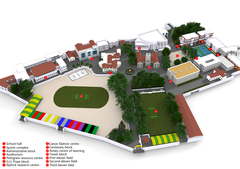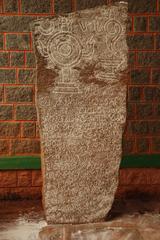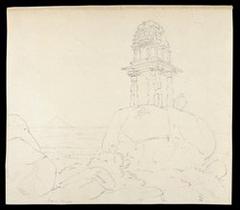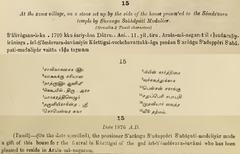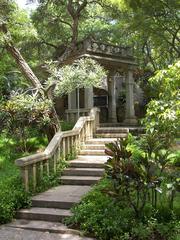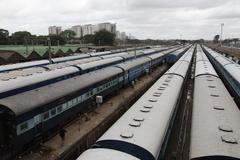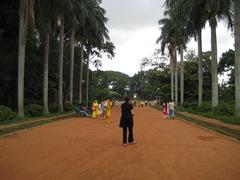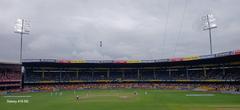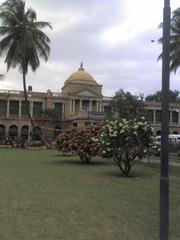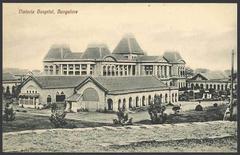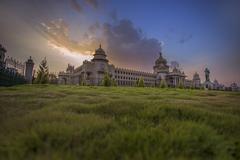
MG Road Bengaluru: Visiting Hours, Tickets, and Historical Sites Guide
Date: 04/07/2025
Introduction: MG Road’s History and Significance
Located in the heart of Bengaluru, Mahatma Gandhi Road—popularly known as MG Road—is more than a bustling commercial thoroughfare; it’s a living chronicle of the city’s transformation from colonial cantonment to cosmopolitan metropolis. Originally called “South Parade” during the British colonial era, MG Road was the central artery connecting the Civil and Military Stations, lined with colonial-era bungalows and iconic buildings like St. Mark’s Cathedral and the Bangalore Club. After Indian independence, it was renamed to honor Mahatma Gandhi, reflecting the nation’s post-colonial identity (chikucab.com, rajasthantouristry.com).
Today, MG Road is a vibrant hub, encapsulating Bengaluru’s blend of tradition and modernity. The area features high-end boutiques, sprawling malls, cultural hubs like the Rangoli Art Centre, and legacy eateries such as Koshy’s. Enhanced by the MG Road Metro Station, its central location makes it accessible to both locals and tourists, offering a microcosm of Bengaluru’s economic, cultural, and artistic dynamism (visitbangalore.in, newskarnataka.com, samedayagratour.co.in).
This guide provides all you need to know for a memorable visit to MG Road, covering its history, landmarks, visiting hours, travel tips, nearby attractions, and practical recommendations.
Contents
- Colonial Origins and Early Development
- Post-Independence Transformation
- Economic and Urban Expansion
- Cultural and Social Significance
- Infrastructure and Connectivity
- Heritage Preservation
- Historical Landmarks
- Commerce and Lifestyle Evolution
- Visitor Information: Hours, Tickets, and Tips
- Getting There
- Shopping, Dining, and Nightlife
- Nearby Attractions
- Safety and Etiquette
- Frequently Asked Questions (FAQ)
- Visual Highlights
- Conclusion and Recommendations
- References
Colonial Origins and Early Development
MG Road’s roots trace back to the British colonial era, when it was known as “South Parade.” It served as the main parade ground and connector between the city’s Civil and Military Stations. The streetscape featured lush gardens, bungalows, and iconic colonial buildings, many of which remain today. Landmarks like the Bangalore Club (1868) and St. Mark’s Cathedral (early 19th century) showcase classic European architecture (rajasthanbhumitours.com).
Post-Independence Transformation
After 1947, South Parade was renamed Mahatma Gandhi Road, symbolizing India’s new national identity (visitbangalore.in). This change marked MG Road’s shift from a colonial promenade to a growing commercial and cultural artery, reflecting Bengaluru’s transformation into a dynamic metropolis (worktheater.com).
Economic and Urban Expansion
MG Road became the city’s commercial heartbeat during Bengaluru’s industrial and IT booms. Its central location and connectivity attracted banks, corporate offices, and retail giants. The skyline evolved as high-rises, luxury hotels, and modern malls like Garuda and 1 MG-Lido appeared alongside colonial buildings (bangalores.in, tripoto.com).
Cultural and Social Significance
MG Road is not just about commerce. It’s a cultural melting pot with venues such as the Rangoli Metro Art Centre and the MG Road Boulevard hosting art exhibitions, performances, and festivals (qexperiences.in). The Holy Trinity Church, built in 1852, is a testament to the area’s history and spiritual heritage (qexperiences.in).
Infrastructure and Connectivity
MG Road’s strategic location connects key neighborhoods like Shivajinagar, Ulsoor, Brigade Road, and Church Street. The MG Road Metro Station on the Purple Line offers seamless transit, making the area easily accessible (visitbangalore.in, nativeplanet.com).
Heritage Preservation
Despite rapid modernization, MG Road retains much of its historical charm. Heritage walks and guided tours highlight the coexistence of colonial-era churches, traditional markets, and contemporary architecture (tripxl.com). Conservation efforts ensure that architectural legacies are not lost (bangalores.in).
Key Historical Landmarks
- Mayo Hall: Built in 1883, this neoclassical building houses the Kempegowda Museum and city civil courts. Open Mon–Sat, 10:00 AM–5:00 PM, free entry (newskarnataka.com).
- Holy Trinity Church: Anglican church from 1852, open daily 9:00 AM–6:00 PM, free entry (newskarnataka.com).
- St. Mark’s Cathedral: Consecrated 1816, known for its colonial architecture (rajasthanbhumitours.com).
- Higginbothams Bookstore: Bengaluru’s oldest bookstore, since 1905, open daily 10:00 AM–8:00 PM (newskarnataka.com).
- LIC Building: Landmark commercial building at Kumble Circle (newskarnataka.com).
- Plaza Theatre: Historic cinema, now MG Road Metro Station with related public art (newskarnataka.com).
Evolution of Commerce and Lifestyle
MG Road’s transformation reflects Bengaluru’s growth. From traditional bazaars to modern malls and international brands, shopping here is diverse. Iconic eateries like Koshy’s and Indian Coffee House offer a taste of the city’s culinary history (trip101.com). The area’s nightlife, with pubs like Pecos and Hard Rock Café, is among the city’s most vibrant (rajasthantouristry.com).
Visitor Information: Visiting Hours, Tickets, and Tips
- MG Road Public Area: Open 24/7; shops and malls generally 10:00 AM–9:00 PM. No entry fees.
- Heritage Sites and Museums: Mayo Hall, St. Mark’s Cathedral, and Holy Trinity Church are open during the day, typically with free or nominal entry.
- Guided Tours: Available through local operators or online platforms; recommended for a deeper historical experience.
- Best Time to Visit: Early mornings, weekdays, and post-monsoon (September–February) offer the best weather and fewer crowds.
Getting There
- Metro: MG Road Metro Station on the Purple Line.
- Bus: Multiple BMTC routes stop nearby.
- Taxi/Rideshare: Ola and Uber widely available.
- Walking: Nearby areas like Brigade Road and Church Street are pedestrian-friendly (yometro.com).
Shopping, Dining, and Nightlife
- Brigade Road & Commercial Street: Premier shopping destinations with a mix of international and local brands.
- Cauvery Emporium: For Karnataka handicrafts (rajasthantouristry.com).
- Koshy’s Parade Café: Legendary Anglo-Indian cuisine, open daily 8:00 AM–11:00 PM (newskarnataka.com).
- Pubs and Breweries: Eclectic nightlife, especially on weekends.
Nearby Attractions
- Cubbon Park: Urban oasis open 6:00 AM–7:00 PM (thrillophilia.com).
- Venkatappa Art Gallery & Government Museum: Art and history lovers’ destinations.
- Church Street: Bookstores, cafes, and street art.
Safety and Etiquette
- General Safety: MG Road is safe, but take standard precautions against petty theft (travelsafe-abroad.com).
- Women Travelers: Safe, but avoid solo travel late at night; use registered taxis (travellikeaboss.org).
- Cultural Etiquette: Dress modestly at religious sites; tipping is customary in restaurants.
Frequently Asked Questions (FAQ)
Q: What are MG Road’s visiting hours?
A: MG Road is accessible 24/7, but shops and attractions typically open 10:00 AM–9:00 PM.
Q: Are tickets required?
A: No ticket for MG Road itself; some museums and galleries may charge nominal fees.
Q: How do I reach MG Road?
A: The MG Road Metro Station on the Purple Line is the most convenient; buses and taxis are also available.
Q: Is MG Road accessible for wheelchair users?
A: Yes, the metro station and many modern buildings are accessible.
Q: What are the best photography spots?
A: Mayo Hall, Holy Trinity Church, public art installations, and Cubbon Park.
Visual Highlights
MG Road, Bengaluru, showcases a vibrant mix of colonial architecture and modern retail establishments. The Rangoli Metro Art Center, a hub for culture and arts adjacent to MG Road metro station.
Conclusion and Recommendations
MG Road stands as a testament to Bengaluru’s dynamic spirit, offering a harmonious blend of history, commerce, culture, and modern lifestyle. Visitors can explore colonial landmarks, shop at bustling markets, enjoy culinary delights, and experience the city’s vibrant nightlife—all within a conveniently accessible neighborhood.
Visitor Recommendations:
- Visit during weekdays or early mornings to avoid crowds.
- Take a heritage walk for deeper historical context.
- Use the Namma Metro for efficient travel.
- Explore nearby attractions like Cubbon Park and Commercial Street.
- Embrace local customs for a more enriching experience.
For real-time updates, guided tours, and exclusive offers, download the Audiala app. Stay connected with our website and social channels for more travel insights and tips.
References
- Exploring MG Road Bengaluru: History, Visiting Hours, and Top Attractions, Chikucab Blog
- MG Road Bengaluru Historical and Cultural Significance, Rajasthan Touristry
- Why is MG Road the Commercial Hub of Bangalore?, Work Theater
- MG Road Locality - Visit Bangalore
- The Evolution of M.G Road: Heartbeat of Bengaluru, News Karnataka
- Things to Do in MG Road Bangalore, Same Day Agra Tour
- Exploring Bengaluru’s Iconic Roads and Culture, Native Planet
- Is It Safe to Travel to Bangalore?, Travel Like A Boss
- The History of Bangalore: Uncovering the City’s Fascinating Past, Medium
- Things to Do in Bangalore, Thrillophilia



